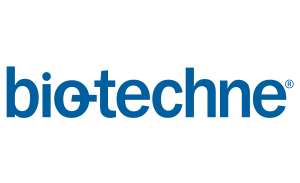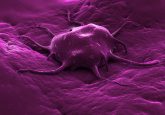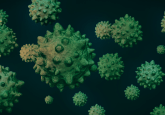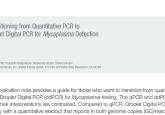Automated immunoassays are fast tracking cell and gene therapy workflows
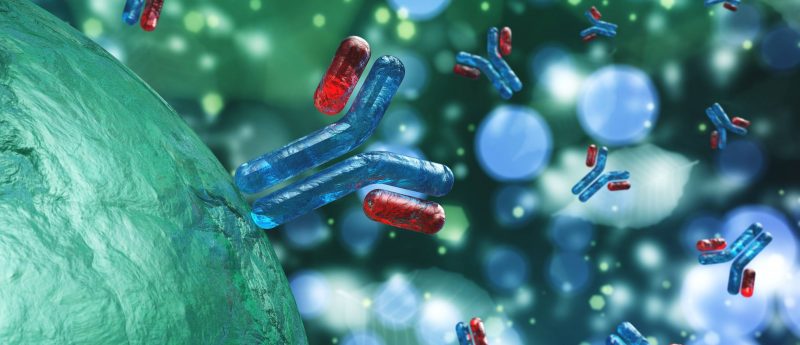
In this interview Dana Holzinger and Caroline Odenwald (both PROGEN, Heidelberg, Germany) discuss the importance of viral titration and the widespread need for frequent, robust and rapid viral titer measurements in drug discovery and development. They go on to address the benefits of an immunoassay approach versus a PCR-based method and what the future holds for automated immunoassays.
1. What is viral titration and why is it important?
The term titration originates from chemistry, representing a method for quantitative chemical analysis. The method is based on a standard solution (titrant), which reacts with an analyte to determine its concentration. However, it has been used by biologists in a slightly modified form describing the determination of concentrations based on a titration curve. In regard to our AAV ELISAs, it means to determine the concentration of the viral particles in an unknown AAV sample based on a specific standard with a known concentration that is provided with our ELISA kits.
The determination of the viral concentration is a very important step during analytical characterization of AAV-based gene therapies. A comprehensive characterization and quality control is mandatory for the production of safe gene therapy products, which is substantiated by the guidelines from the regulatory authorities. Therefore, the decision of which methods to use for characterization is a very crucial factor. It is beneficial to choose methods, which are robust and reproducible, especially methods showing low variabilities between labs or even between people from the same lab meet this requirement.
To make sure our AAV ELISAs generate accurate data, PROGEN established internal gold standards for the calibration of the ELISA kits. While there are commercially available Reference Standard Materials (RSM) available for the serotypes AAV2 and AAV8, the AAV-based gene therapy field lacks corresponding RSMs for the other AAV serotypes. However, standard materials for calibration are indispensable tools for the quality control of our AAV ELISAs but also for the development of new AAV ELISA kits. For this reason, our team established a process for comprehensive characterization of our internal gold standards inspired by the process published for the AAV2 and AAV8 RSM characterization. Each ELISA lot is carefully calibrated based on the corresponding internal gold standard to make sure our ELISA kits not only measure accurate capsid titers but also have low inter-lot variabilities to assure consistency for our customers. The precise characterization and high-level quality control of PROGEN´s AAV ELISAs enable a standardized workflow and accurate data for AAV capsid titers.
2. There seems to be a widespread need for frequent, robust and rapid viral titer measurements in drug discovery and development – why is that?
The gene therapy market is growing rapidly which clearly determines the demand. More and more companies enter the field of gene therapy, which increases the exertion of pressure, specifically time pressure on the companies and the scientists. The healthcare industry has always been a highly competitive field, and the promising results from previous and current clinical studies using gene therapies and in particular AAV-based gene therapies contribute to this development.
The transfer from preclinical studies to clinical trials also increased the pressure from regulatory authorities asking for robust, reliable and reproducible data to ensure the safety of the gene therapy products. It is mandatory to have the product fully characterized to be transferred into clinical trials, which includes data that can be reproduced, and show a consistency throughout the process.
However, characterization of viral-based products is not trivial since there are several components that can influence efficiency and safety. The term viral titer as such is not a very precise description since there are different viral titers to be measured for a comprehensive characterization. The field discriminates between capsid titers, genome titers and infectious titers. While the capsid titer which you can determine using PROGEN´s AAV ELISAs describes the amount of fully assembled viral capsids including full and empty particles, the genome titer refers to the number of genomes carrying the transgene that have been packed into the viral capsids. There can be significant differences between these two titers since not each viral particle necessarily contains a transgene. The packaging efficiency depends on different factors including production processes as well as the specific transgene that has been integrated into the genome sequence.
Though it sometimes is underestimated, the capsid titer provides very important information. First of all, it gives information about the packaging efficiency and puts the genome titer in relation to the total number of viral particles. It is known that empty particles can induce an unwanted immune response when administered to patients. These particles lack the transgene so they do not have a therapeutic effect. Consequently, empty particles might interfere with the efficient delivery of the transgene by inducing an immune response against the AAV vector and additionally do not contribute to the therapy. This obviously needs to be prevented, especially considering the single vector application to each patient. Since gene therapies have been designed to restore dysfunctional genes permanently, a single application is supposed to be sufficient to achieve a lifelong cure. This ambitious objective clearly emphasizes why an efficient initial treatment is so important.
3. What are the benefits of measuring viral titers with an immunoassay approach (vs a PCR–based approach)?
As described previously, there are different viral titers to be determined. In this context, it is important to say that the AAV ELISA, which is an immunoassay approach, measures the AAV capsid titer while the PCR-based methods are used to determine the genome titer. Since both titers are indispensable for the comprehensive characterization of an AAV-based gene therapy product, there is no either or with ELISA and PCR.
However, in general, a PCR-based approach shows much more variabilities than the AAV ELISA, which is due to the method itself. In a PCR approach, small amounts of DNA are amplified for detection and quantification. This makes the method highly sensitive but also prone for high variabilities of the final data since everything gets amplified during this process. Thus, small differences such as pipetting errors occurring by pipetting small volumes, which by the way all pipettes carry when pipetting amounts lower than 10µl, will be amplified as well and might contribute to the high variabilities.
Since the PROGEN AAV ELISAs are not based on amplification processes, naturally occurring small differences only have a minor effect on the final result compared to PCR-based approaches. In 2010 and 2014 when the AAV2 and AAV8 Reference Standard Materials (RSM) [1,2] were characterized, the inter-lab variances of qPCR and the PROGEN ELISAs were analyzed in contributing labs around the world. The results clearly demonstrate that the PROGEN ELISAs showing CVs of 34% [1] (rAAV2) and 40% [2] (rAAV8) were superior compared to qPCR (rAAV2: 78% [1] and rAAV8: 113% [2]) in terms of inter-lab variances.
Another critical factor of the PCR-based approaches is the selection of specific primers. While the PCR-based methods, depending on the primers used, might not be able to discriminate between the amplified full-length DNA product and amplified DNA fragments of a certain size, the PROGEN ELISA only measures fully assembled capsids due to the unique antibodies used for the detection, which exclusively bind conformational epitopes present on fully assembled AAV particles.
However, it is very important to have data for all of the different viral titers including the genomic titer provided by PCR as well as the capsid titer provided by ELISA, thus making a comparison of PCR-based methods and our ELISA very difficult. We strongly recommend determining the different titers ideally with several orthogonal methods to gain a comprehensive understanding of the gene therapy product and ensure the highest possible level of safety for the patients.
4. The move towards near complete automation of life science tools is becoming prevalent across large pharma and biotech. What could be the benefits of determining viral titers with an Ella like platform?
We would like to hand this question over to our partners at proteinsimple since we are convinced that proteinsimple will give you a more sophisticated answer on the advantages of the Ella platform. However, as final remark, we really enjoy working with proteinsimple and join forces by combining PROGEN´s expertise in the field of AAV gene therapy with the expertise on automated systems of proteinsimple. In addition, working with proteinsimple has been a great experience on a personal level, which is a major factor for the successful cooperations.
References
- Lock M, McGorray S & Auricchio A et al. Characterization of a recombinant adeno-associated virus type 2 reference standard material. Hum. Gene Ther. 21, 1273–1285 (2010).
- Ayuso E, Blouin V & Lock M et al. Manufacturing and characterization of a recombinant adeno-associated virus type 8 reference standard material. Hum. Gene Ther. 25, 977–87 (2014).
About the authors
 Dana Holzinger, Head of Product Management, PROGEN
Dana Holzinger, Head of Product Management, PROGEN
Dr Dana Holzinger studied Biology at the Ruprecht Karls University in Heidelberg, Germany. Her dissertation at the German Cancer Research Center and the University Hospital in Heidelberg focused on the identification of human papillomavirus-associated head and neck squamous cell carcinomas. Afterwards, Dana worked as a postdoctoral researcher leading several molecular epidemiological studies on the identification of biomarkers for different HPV-associated pathologies. In 2019, she joined PROGEN as Product Manager and became Head of Product Management in 2020.
 Caroline Odenwald, Head of Marketing, PROGEN
Caroline Odenwald, Head of Marketing, PROGEN
Dr Caroline Odenwald studied Biology and Cancer Biology at the Universities of Marburg and Heidelberg, Germany. She acquired her doctorate in the department of virus-associated vaccination strategies at the German Cancer Research Center (DKFZ) in Heidelberg, Germany where she extended her work until 2018 as research scientist. Caroline joined PROGEN as Product and Marketing Communications Manager in 2018 and became Head of Marketing in 2020.
In association with

